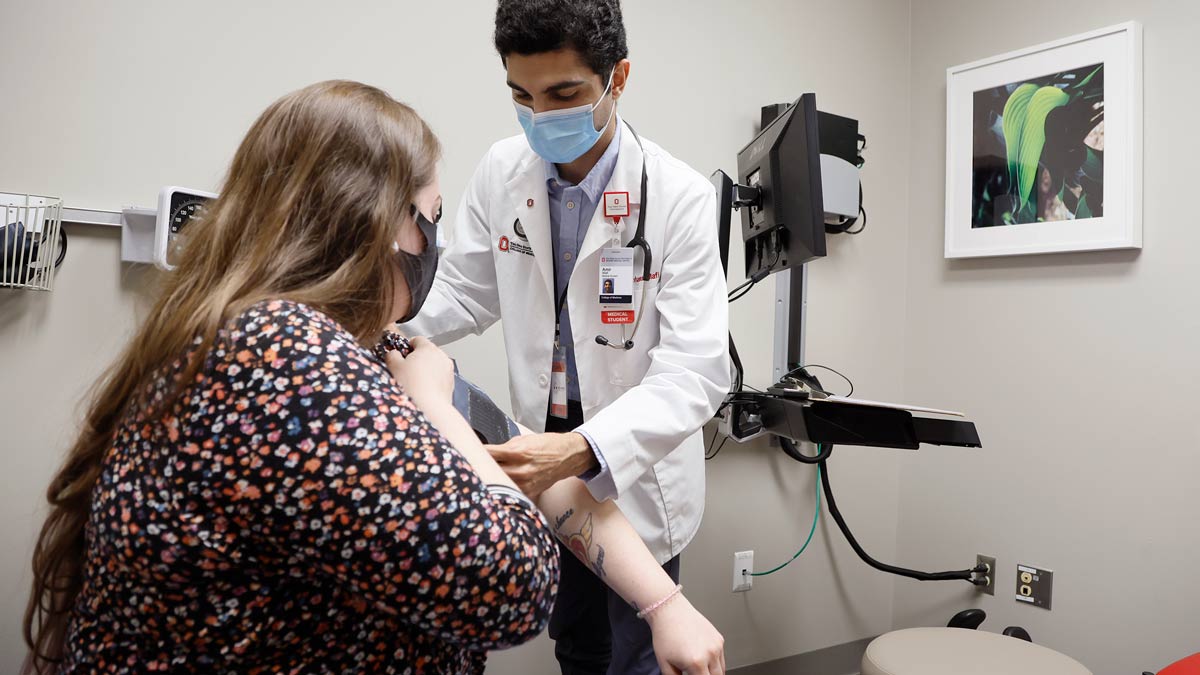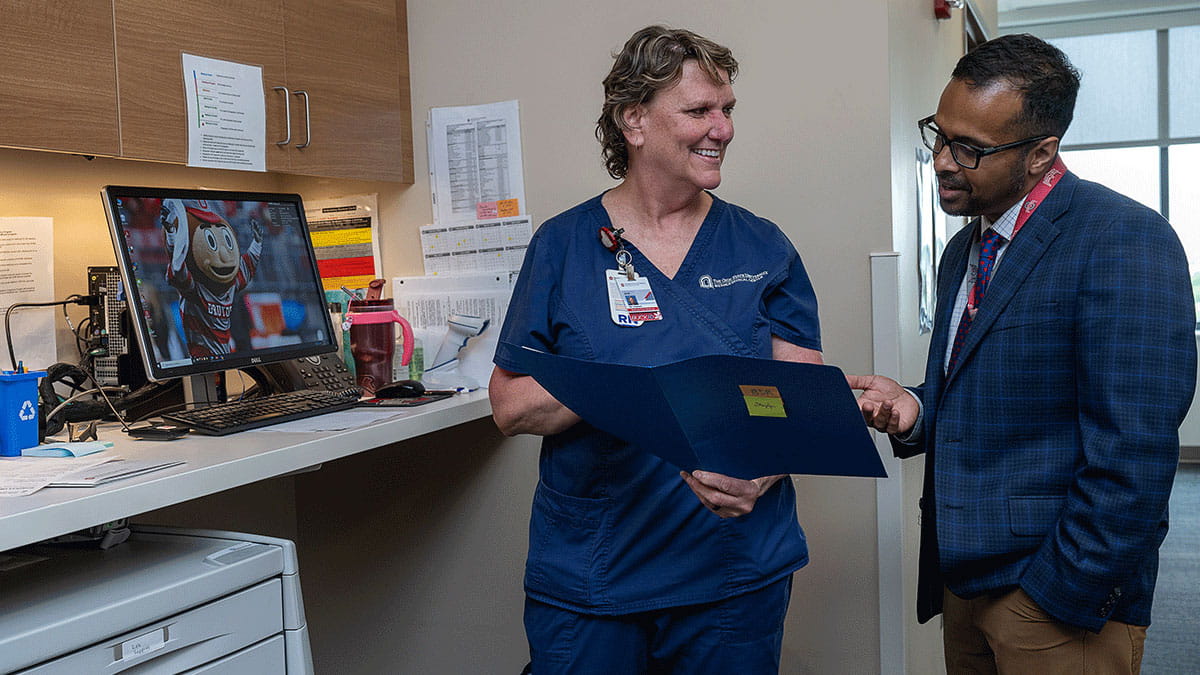Ohio State College of Medicine receives national award for Columbus Free Clinic

For the fifth time, The Ohio State University has been named as a regional winner of the W.K. Kellogg Foundation Community Engagement Scholarship Award from the Association of Public and Land-grant Universities (APLU). The award recognizes extraordinary community engagement initiatives among public four-year universities nationwide.
Ohio State received the award for its work with the student-run free clinic (SRFC) called the Columbus Free Clinic (CFC). The clinic was launched more than 30 years ago to address unmet healthcare needs and provide critical care to underserved adults in the community.
Robert Cooper, MD, associate professor of Emergency Medicine at the Ohio State College of Medicine, oversees the college’s SRFC, which resides within the CFC, a primary and urgent care walk-in clinic managed by Ohio State medical students.
“Primary care has expanded to also focus on patients’ housing, mental health, food and social needs as much as on their medical needs,” Dr. Cooper says. “This gives students a deeper understanding of the many social contexts of health and well-being.”
Cooper says that receiving national recognition once again “helps to show that other people recognize the great work we do.”
Since 2007, APLU and the Engagement Scholarship Consortium, with support from the W.K. Kellogg Foundation, have partnered to recognize universities’ engagement scholarship and partnerships. The award recognizes programs that demonstrate how universities have deepened their community partnerships to achieve broader impacts in their communities, said APLU President Mark Becker. Read more.
Explore more stories of innovation, clinical care, education and community outreach at The Ohio State University College of Medicine.
VIEW ANNUAL REPORT



